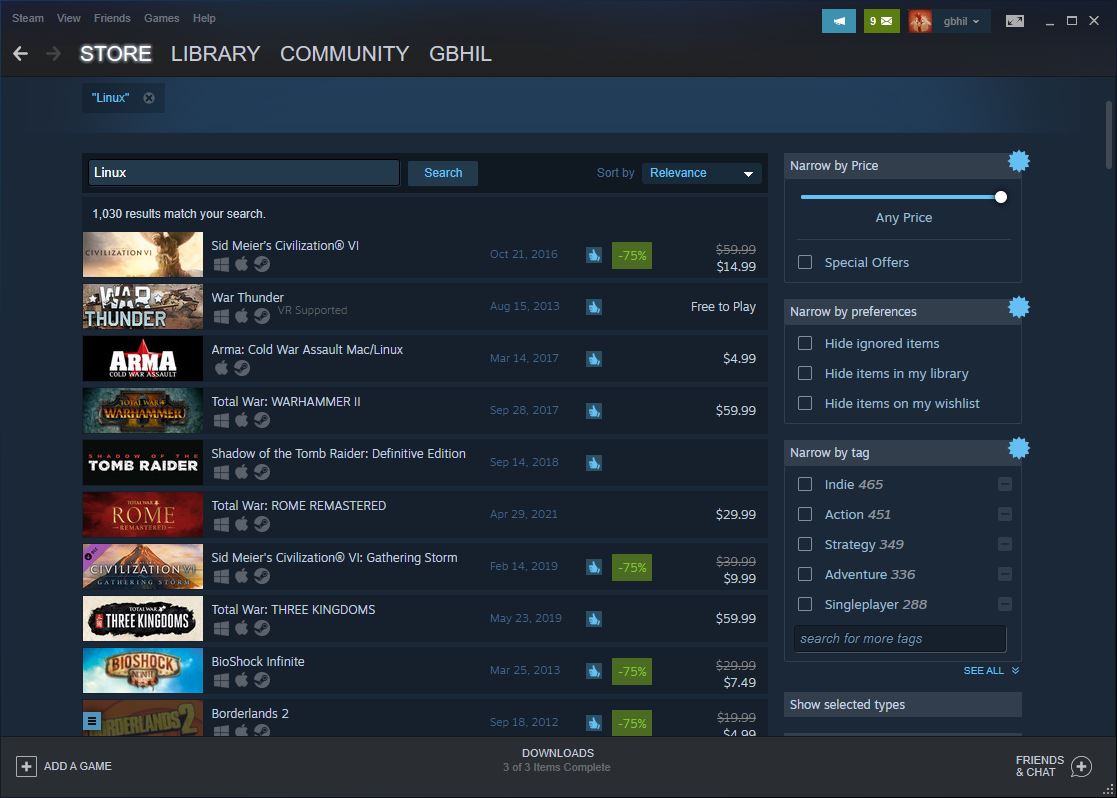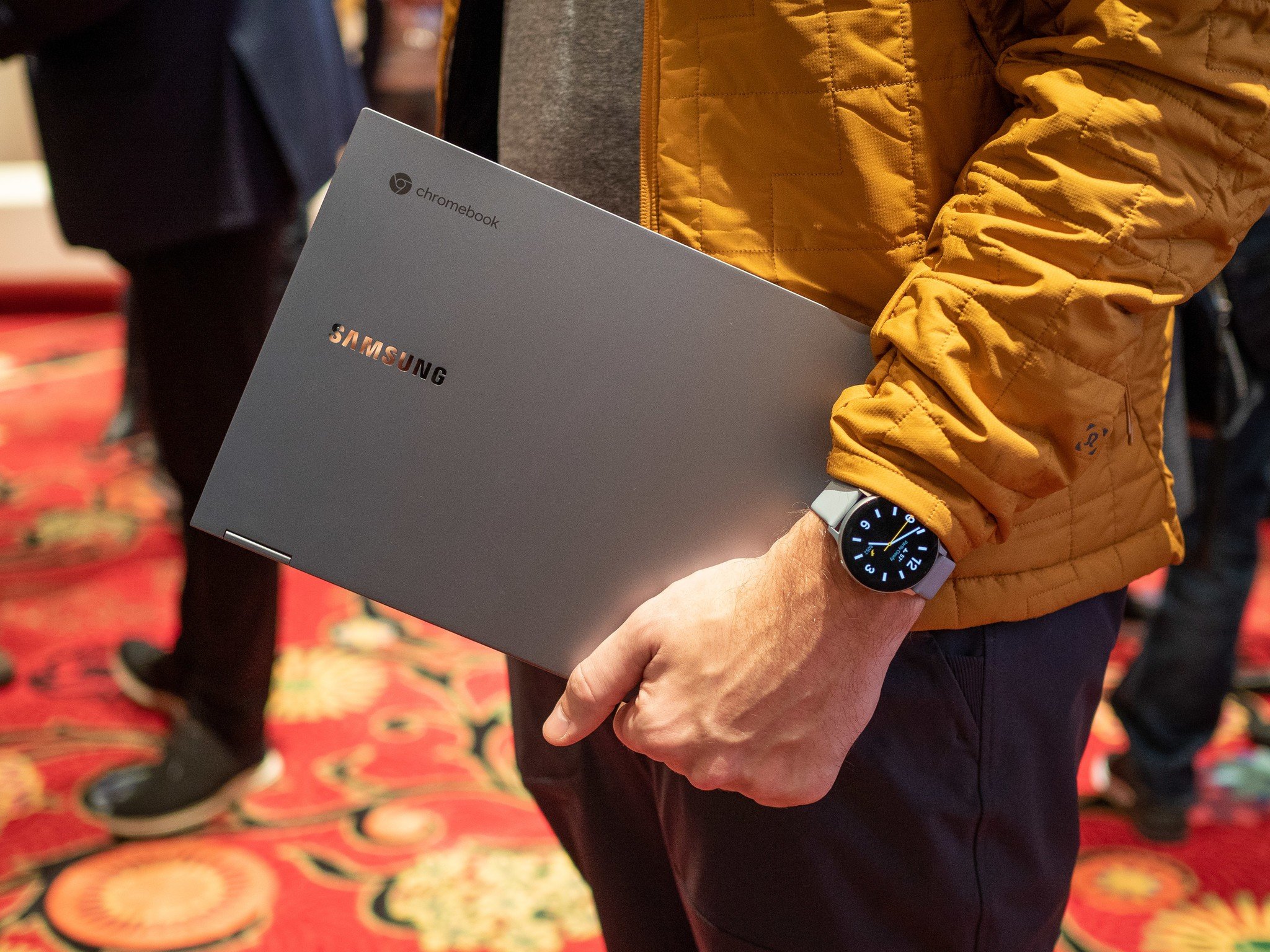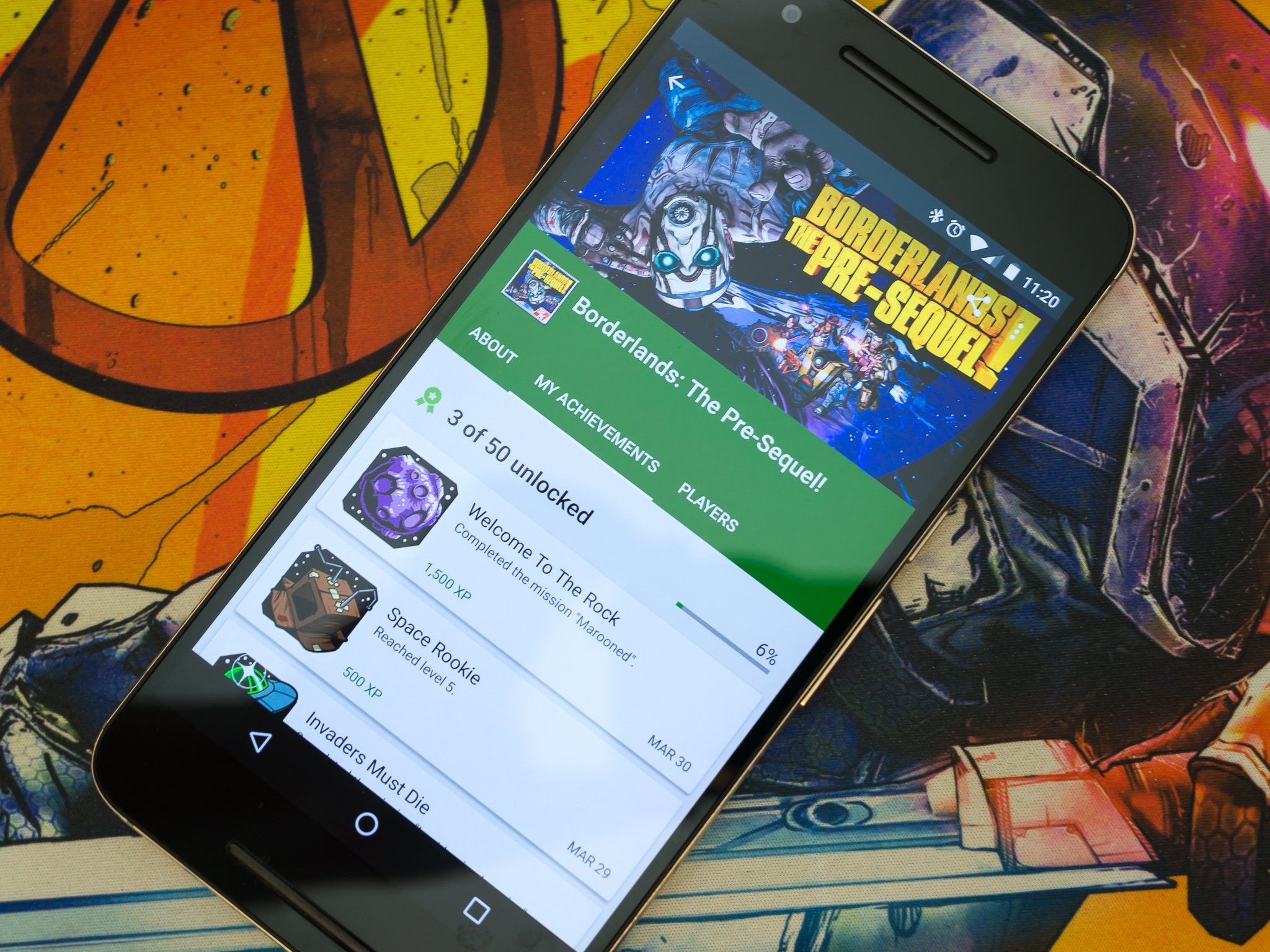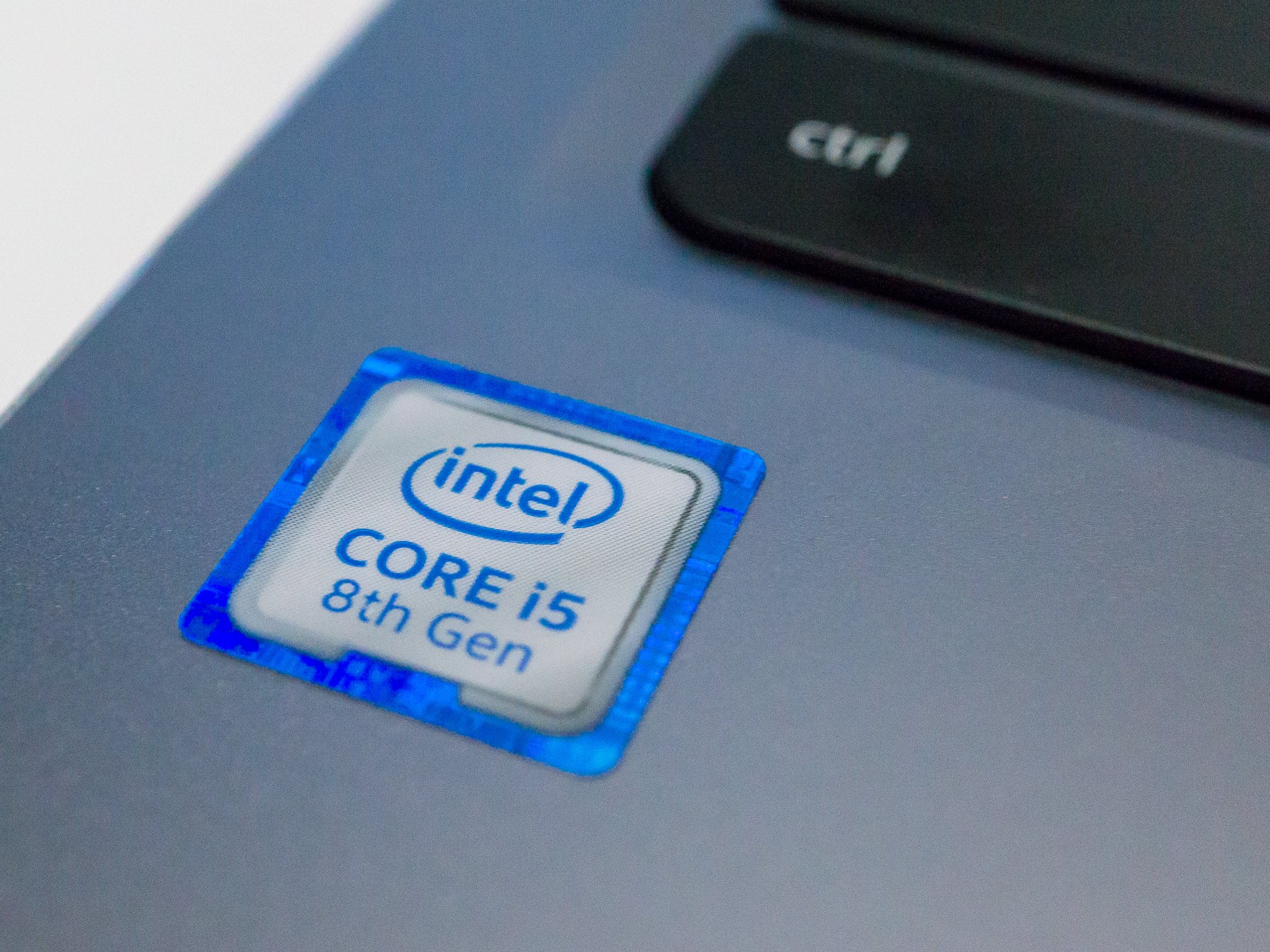Chromebooks have a big gaming future, but it's not just with Stadia
It appears that Google has moved forward with its plans for a native Steam client for Chrome OS, but that's not a magic bullet.
One of the biggest reasons I use my Windows desktop computer is because it's my gaming machine. I still do a little audio production, and I have an extensive Lightroom catalog, but most everything I do every day works great on any of the best Chromebooks. Except for those gaming moments.
Google knows that the lack of "desktop" games for Chrome is a pain point for many people who would otherwise happily make the switch. The company is trying to do something about it by leveraging the Chrome OS Linux container and Steam, Valve's popular online game store and platform for PCs.
We recently saw a hint of the upcoming Game Mode for Chrome that should be tied to the native Chrome OS version of Steam. Google will almost certainly address the fact that mobile games via Android's Google Play Store just aren't enough for everyone. By working with Valve to build an optimized way to play games built for Linux, it can do so fairly easily because Chrome OS handles containers very well, and the Linux kernel was built to accommodate them. It's going to work.
We know it's going to work because you can already install Steam and play games on your Chromebook without any sort of optimization. Google and Valve working together to allocate system resources to make it better should have a big impact, but that doesn't solve the core issue: weak hardware.
Chrome OS doesn't need very powerful hardware to run well on a Chromebook, and that has always been a big draw of the operating system — you can spend less and still have a very capable machine. Games, however, don't follow this path and are very hardware-dependent.
You can find Chromebooks with enough RAM and a decent CPU, but graphics lag behind.
You can buy a Chromebook with plenty of disk space and RAM, so that's not the hardware I'm speaking of here. The same goes for the processor, as Intel Core i-series chips are inside plenty of Chromebooks. The problem is the same as it is for any laptop — plenty of games need a graphics card that can carry a bit of weight, and on-chip solutions usually can't do it.
Eventually, we'll see a very expensive Chromebook that's built like a "gaming" laptop with super-fast RAM and a discreet GPU built into the motherboard. That's something plenty of people have wanted for a long time, myself included. But right now, we have three options when it comes to the GPU: Intel's on-die Iris GPU, AMD's on-die Radeon GPU, and ARM-based chips that use on-die GPUs. None of these options works very well, which is why Windows "gaming" laptops are already a thing.
These three options can severely hamper your experience with certain games, mostly newer titles from bigger studios like Bethesda or CDPR. Games require a few minimum specs: disk space, RAM, a minimum CPU speed, and a GPU that's strong enough to render the game at an acceptable frame rate. The first three are already present, and if you have a top-tier Chromebook, you have a fast enough CPU, plenty of RAM, and can always make more disk space.
The GPU, however, limits a lot of choices. To add to the issue, there isn't as much choice to begin with because most games are built for Windows only. This doesn't only apply to Chromebooks; there are plenty of great games for Linux or Mac, but there are many more that can't be played because they are Windows only.
There are plenty of games built for Linux on Steam's store. There are plenty more that aren't.
It's not all bad because Steam has some really great games that were built to run on Linux and would have no problem installing and starting up on a Chromebook. Franchises like Borderlands, Hitman, Civilization, and even Tomb Raider are well-represented, and I've played many hours of Linux games without an issue on machines with the hardware to do so. I've also tried to spend a few hours playing some of those same games through Steam on Chrome OS, and things didn't go nearly as well.
Those pesky minimum specs can be a real letdown for any gamer, but when your hardware is so far below the recommended threshold, your experience is bad. Google making a Game Mode that shuts down background processes and focuses power on the game you're currently trying to play will help, but it's not enough to fix the disparity when it comes to specs.
Borderlands TPS is a great example; on something like the Core i5 Pixelbook Go, it almost works. You need a CPU with at least two cores running at 2.4GHz: check. You need 4GB of free RAM: check. You need 13GB of disk space. That's tough sometimes, but check. You also need a supported video card, which in this case means an NVIDIA Geforce 260 or better.
The Geforce 260 isn't a very high-end video card in 2021, and Borderlands TPS isn't a very high-end game in 2021, either. But the Intel Iris GPU you find in every Chromebook with an Intel CPU or the ARM-based GPU you find in Chromebooks that use an ARM chip from MediaTek is even worse. AMD's APU (application processor unit) — a thing that was designed from the ground up to act as a CPU, GPU, and a shared resource for both to run as we've seen in the PlayStation — does fare a little better, but it's still not pleasant.
Older AAA titles almost work on the typical Chromebook's low specs.
You turn the game's graphics to the bare minimum, and it looks awful but still doesn't play. And this is a game from 2012 with an Android version that is actually really awesome on the Shield TV (which has a really good ARM GPU). There isn't anything Google or Valve can do to fix this. There's probably also nothing Gearbox (Borderland's publisher) can do either. It just is what it is.
You see a similar situation with many AAA titles from years back, like games in the Tomb Raider series. They almost play on a really expensive Chromebook. They also "almost play" on a very low-spec Windows laptop, so this isn't a Chrome issue. It's an issue where games built for PC are usually either unoptimized console ports or built for the extreme gamer with a very high-end PC.
It's also something Windows gamers have already gone through and, as mentioned, spawned a new breed of gaming laptops because of it. Google and its Chrome partners will have to do the same if gaming is ever going to take off for Chrome. This poses new questions like the inevitable catch-22 where nobody is buying gaming Chromebooks because the game catalog is smaller and game developers aren't interested in building Linux-optimized versions because nobody is buying gaming Chromebooks.
You can already sideload Steam onto your Chromebook. Making it great will take more than just a new Game Mode.
As of right now, the only way to install and play Steam games on Chrome is to sideload Steam and choose games that aren't very GPU dependant. That's OK and definitely better than nothing. But a magical union of Google and Valve isn't really going to solve anything without Chromebook OEMs building laptops with the hardware needed to do it well.
Hopefully, that's in the cards soon.
from Android Central - Android Forums, News, Reviews, Help and Android Wallpapers https://ift.tt/3fjZYBy
via IFTTT





Aucun commentaire: